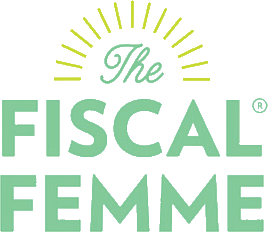What’s an ETF?
One of the reasons investing can feel daunting is that it comes with a whole language of jargon. ETFs, mutual funds, expense ratios - the list goes on and on. It’s enough to make your eyes glaze over.
Unfortunately, if we’re going to invest and grow our money (yes, please!), we’re going to want to understand some of this jargon so we can invest confidently and competently. But the good news is that like with any language, we can get more comfortable with the vocabulary over time. Today we’re starting with “ETF”. Here’s everything you need to know (and then some).
Quick disclaimer before we dive in: This is not investing advice and I’m not endorsing any specific ETF investment.
What’s an ETF?
ETF stands for Exchange Traded Fund and is a type of investment. It can be made up of (or hold) any combination of stocks, bonds and even commodities, like gold and silver.
An ETF can be bought and sold throughout the day on a stock exchange by investors (us) the same as you would buy a share of any stock. A stock exchange is a market in which investments (securities) are bought and sold.
ETFs are great because they are a low cost way for investors to own a basket of assets without having to buy all of the components individually. It’s an easy way to diversify (i.e. not putting all your eggs in one basket or company), because owning many companies is less risky than investing in just one company’s stock. You can invest in ETFs through a brokerage account.
How do ETFs work?
A company that makes the ETF (the fund provider) owns the investments (or assets) in an ETF and designs the ETF according to the fund’s strategy. Many ETFs track an index like the S&P 500 or the Gender Diversity Index, and some are invested by a team of investment professionals.
The fund then sells shares of the ETF to investors. Shareholders own a portion of an ETF but not the underlying assets in the fund. Some ETFs pay a dividend like some company stocks do. A dividend is a cash payment to investors that’s typically paid quarterly.
Since an ETF is traded on a stock exchange, ETF prices move up and down throughout the day based on demand (how much investors are buying and selling). Share prices of ETFs can vary from the underlying assets.
The cost of ETFs.
ETFs charge the investors a fee in the form of an expense ratio. Expense ratios vary by investment and are a percentage fee that you pay out each year. To calculate how much you’re actually paying in fees, multiply the expense ratio by the total amount you have invested in the fund. So if the expense ratio is 0.25% and you have $10,000 invested, you are paying $250 in fees. Expense ratios are the cost of running the fund passed on to the investors. All funds have an expense ratio but you can choose funds with lower fees.
Depending on the brokerage platform you use to invest, you may also pay a commission to buy and sell ETFs (and any investment). Commissions can be avoided as many online brokers offer no commission trading.
ETFs vs. Mutual Funds - which is better?
Mutual funds and ETFs are quite similar but there are a couple nuances. ETFs typically have lower fees. According to Nerdwallet, the average expense ratio for equity ETFs in 2019 was 0.18%, compared with 0.52% for equity mutual funds.
Unlike ETFs that trade on an exchange (so their price fluctuates as long as the market is open), mutual funds only trade once per day after the market close.
ETFs also have a tax advantage. Mutual funds typically have higher turnover (more buying and selling) than ETFs, which results in capital gains tax. A capital gain is the profit you earn when you sell an investment. If you lost money on the investment that’s a capital loss.
Active vs. Passive ETFs - which is better?
A passive ETF like the SPDR S&P 500 (SPY) tracks an index (the S&P 500). There are no investment professionals deciding what the ETF is invested in. It mimics the index it’s tracking. Passive ETFs generally have lower expense ratios than actively managed ETFs because there is less cost of the investment team. Historically, passive funds have outperformed active funds over the long-term (including the cost).
With actively managed ETFs, portfolio managers choose the investments and are more involved in buying and selling shares.
The types of ETFs
Index ETFs: These ETFs like SPY and QQQ track indexes such as the S&P 500 and the Nasdaq 100. The S&P 500 represents the 500 largest companies in the US and the Nasdaq 100 typically contains technology stocks.
Sector ETFs: These ETFs track individual industries such as clean energy (ICLN), financial services (XLF), REITs (IYR), and Biotech (BBH).
Commodity ETFs: These ETFs track commodity markets including agriculture (DBA) and precious metals (GLD, SIVR).
Bond ETFs: These ETFs track bond markets such as treasuries, which are government backed bonds (IEI).
Investment Strategy ETFs: These ETFs bucket stocks into different strategies such as large growth, which simply means large companies with expected growth (SPYG). Another popular category is small value, which represents smaller companies cheaply priced (VBR). Small cap value stocks have been regarded to have the highest expected return from research dating back to the 1930s.
Should I invest In ETFs?
ETFs have become really popular because it’s an easy way to invest in hundreds of companies across industries (yay diversification) for a low cost.


